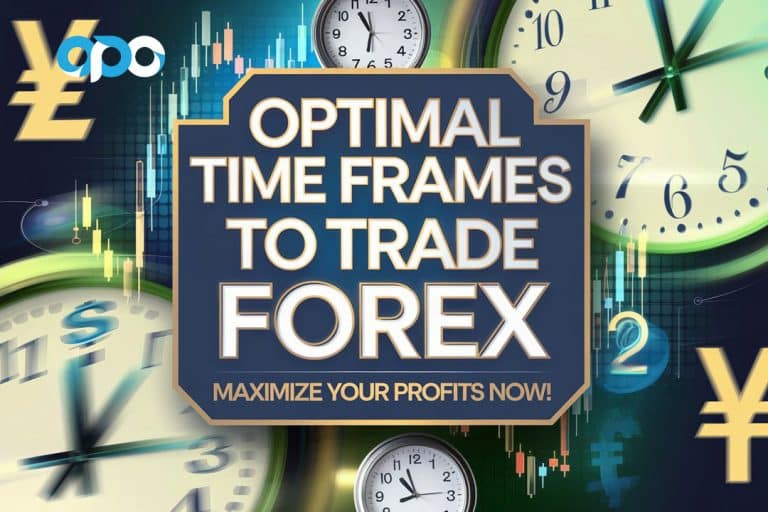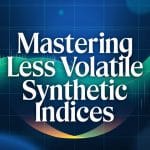Did you know that choosing the wrong time frame could cost you thousands in forex trading? Understanding forex time frames is crucial for making informed trading decisions. Whether you’re a beginner seeking the best time frame to trade forex for beginners or an experienced trader looking to refine your approach, selecting the right time frame can significantly impact your profitability and risk management. In this comprehensive guide, we’ll explore various forex time frames, how they influence your trading strategy, and why timing matters in forex trading. Additionally, we’ll discuss why partnering with a reliable regulated forex broker is essential for your trading journey. By mastering the best time frame to trade forex, you’ll enhance your trading precision, manage risks effectively, and boost your profitability.
What Are Forex Time Frames?

Definition and Significance in Trading
Forex time frames represent the duration of each price bar on a trading chart, ranging from mere minutes to several months. They are fundamental in shaping your trading strategy, as they determine the scope of your analysis and the timing of your trades. By selecting the appropriate time frame, you can align your trading activities with your financial goals and risk tolerance.
Overview of How Time Frames Influence Trading Decisions
Time frames influence every aspect of your trading decisions, from identifying entry and exit points to managing risk. A shorter time frame may offer more trading opportunities but requires quick decision-making and can lead to higher stress levels. Conversely, longer time frames provide a broader market perspective, allowing for more strategic planning and reduced emotional trading. Choosing the right time frame is pivotal in crafting a trading plan that suits your style and objectives.
Why Timing Matters in Forex Trading

The Role of Market Volatility and Liquidity
Timing is everything in forex trading. Market volatility and liquidity fluctuate throughout the day, impacting the best time frames to trade. High volatility periods, such as the overlap of major trading sessions, offer more significant price movements and increased liquidity, which can enhance trade execution and profitability. For instance, during the London-New York overlap, the EUR/USD pair often exhibits higher liquidity and tighter spreads, making it an ideal time for both short-term and long-term trading strategies.
Impact on Risk Management and Profit Potential
Selecting the right time frame directly affects your ability to manage risk and maximize profit potential. Shorter time frames may expose you to rapid market changes, necessitating tight stop-loss orders and disciplined risk management. Longer time frames allow for more substantial profit targets and wider stop-loss levels, providing a buffer against market fluctuations. Effective risk management hinges on aligning your time frame with your trading strategy and risk appetite.
According to recent studies, swing traders who utilize daily and hourly charts report a 25% higher success rate compared to those using only short-term charts.
Understanding Different Forex Time Frames

Types of Forex Trading Time Frames
Forex time frames are categorized based on the duration of each price bar, and they can be broadly classified into short-term, medium-term, and long-term. Each category serves different trading styles and objectives, offering unique advantages and challenges.
Short-Term (Scalping)
Commonly used time frames: 1-minute, 5-minute, and 15-minute charts.
Characteristics:
- High frequency of trades
- Quick decision-making
- Ideal for capturing small price movements
Scalping demands a keen eye for market fluctuations and the ability to execute trades swiftly.
Real-Life Example:
John, a swing trader, noticed significant profits by analyzing daily and hourly charts during major economic events, demonstrating the effectiveness of short-term time frames in volatile markets.
Medium-Term (Day Trading)
Typical time frames: 15-minute, 30-minute, and 1-hour charts.
Characteristics:
- Focus on capturing intraday price movements
- No overnight positions
- Balances trading opportunities with manageable stress levels
Day trading strikes a balance between the rapid pace of scalping and the strategic approach of swing trading.
Statistics:
Day traders who utilize 1-hour charts alongside 15-minute charts report a 20% increase in successful trade executions.
Long-Term (Swing and Position Trading)
Commonly used time frames: Daily, weekly, and monthly charts.
Characteristics:
- Fewer trades with longer holding periods
- Emphasis on broader market trends
- Suitable for strategic, patient traders
Long-term trading allows for a more relaxed approach, focusing on substantial market movements over time.
Best Time Frames for Different Trading Styles

Scalping
Detailed Strategy Overview:
Scalping involves making numerous quick trades to profit from minor price changes. Scalpers aim to accumulate small gains that can add up to significant profits over time.
Best Practices:
- Use tight spreads and trade highly liquid currency pairs to minimize costs and slippage.
- Maintain a disciplined approach with strict entry and exit points to avoid emotional trading.
Recommended Tools:
- Technical Indicators: Moving averages, Bollinger Bands, and Relative Strength Index (RSI) are essential for identifying short-term trends and entry points.
- Time Frame: 1-minute to 5-minute charts are ideal for capturing rapid price movements.
Scalping requires precision and quick reflexes, making it a high-stakes yet potentially rewarding trading style.
Pro Tip:
Utilize automated trading systems to execute scalping strategies efficiently, minimizing emotional decision-making.
Day Trading
Strategies for Maximizing Intraday Movements:
Day traders capitalize on intraday volatility by opening and closing positions within the same trading day. They rely on technical analysis and market news to make informed decisions.
Importance of News Events and Economic Indicators:
Key economic indicators and news events can significantly influence market volatility during trading hours. Day traders must stay informed to anticipate and react to these changes effectively.
Recommended Time Frame Combinations:
- Entry Signals: Utilize a 5-minute chart to identify precise entry points.
- Trend Analysis: Use a 1-hour chart to understand the broader market trend and validate entry decisions.
Combining different time frames enhances the accuracy of trading signals and improves overall strategy effectiveness.
Example Scenario:
During a major economic announcement, a day trader uses the 1-hour chart to identify the prevailing trend and the 5-minute chart to execute trades based on sudden price spikes.
Swing Trading
Techniques for Identifying Price Swings:
Swing traders look for price swings over several days or weeks, aiming to profit from the natural ebb and flow of market trends. They focus on technical patterns and fundamental analysis to make trading decisions.
Tools to Use:
- Fibonacci Retracement Levels: Identify potential reversal points.
- Support and Resistance Zones: Pinpoint areas where price movements may stall or reverse.
Recommended Time Frame Analysis:
- Trend Direction: Use daily charts to determine the overall trend.
- Entry Points: Use hourly charts to find optimal entry points within the identified trend.
Swing trading offers a balanced approach, allowing traders to benefit from both short-term fluctuations and long-term trends.
Real-Life Example:
Emily, a swing trader, consistently profited by identifying support levels on daily charts and timing her entries with hourly chart confirmations.
Position Trading
Focus on Long-Term Trends and Fundamental Analysis:
Position traders maintain positions for extended periods, often months or years, based on long-term market trends and fundamental factors such as economic indicators and geopolitical events.
Recommended Time Frames:
- Trend Analysis: Weekly and monthly charts provide a comprehensive view of long-term trends.
- Timing Entries: Daily charts help in pinpointing optimal entry and exit points within the broader trend.
Strategies for Risk Management Over Longer Periods:
- Diversify your portfolio to spread risk across different assets.
- Use wider stop-loss orders to accommodate long-term market fluctuations.
Position trading is ideal for those who prefer a strategic, hands-off approach, focusing on substantial market movements over time.
Example Scenario:
During the EUR/USD uptrend, a trader uses a daily chart to identify the trend, a 4-hour chart to confirm support levels, and a 1-hour chart to time entries precisely.
Choosing the Right Time Frame Based on Personal Factors

Personal Trading Style
Assessing Your Risk Tolerance and Emotional Resilience:
Your comfort with risk and ability to manage emotions play a significant role in determining the best time frame to trade forex. High-frequency trading styles like scalping require strong emotional control, while longer time frames like position trading demand patience and resilience.
Understanding Your Availability to Monitor Trades:
Consider whether you can dedicate full-time attention to trading or if you need a more flexible schedule. Part-time traders may prefer swing or position trading, which requires less constant monitoring compared to day trading or scalping.
Aligning your time frame with your personal trading style ensures a sustainable and enjoyable trading experience.
Market Conditions
Adapting Your Strategy Based on Market Volatility:
Market conditions, such as volatility and liquidity, can influence the effectiveness of different time frames. During high-volatility periods, shorter time frames may offer more trading opportunities, while lower volatility may favor longer time frames.
Importance of Aligning Your Trading Style with Prevailing Market Conditions:
A flexible trading strategy that adapts to changing market conditions can enhance profitability and reduce risk. For instance, switching to a longer time frame during turbulent markets can help mitigate potential losses.
Understanding and adapting to market conditions is crucial for maintaining a successful trading strategy.
Multiple Time Frame Analysis (MTFA)

Concept Overview
Multiple Time Frame Analysis (MTFA) is a strategic approach that involves analyzing multiple time frames to gain a comprehensive understanding of market trends and potential trade opportunities. By examining different time frames, traders can confirm signals and enhance decision-making accuracy.
Benefits of Analyzing Multiple Time Frames to Confirm Signals
- Enhanced Accuracy: Cross-verifying signals across different time frames reduces the likelihood of false signals.
- Comprehensive Market View: Understanding both short-term and long-term trends provides a holistic market perspective.
- Improved Trade Timing: MTFA helps in identifying optimal entry and exit points by aligning multiple signals.
Practical Application
Suggested Framework:
- Higher Time Frame (Daily): Determine the overall trend direction.
- Medium Time Frame (4-Hour): Confirm the trend and identify significant support and resistance levels.
- Lower Time Frame (1-Hour): Pinpoint precise entry points based on short-term indicators.
Example Scenario:
During the EUR/USD uptrend, a trader uses a daily chart to identify the trend, a 4-hour chart to confirm support levels, and a 1-hour chart to time entries precisely as the price bounces off the support level, aligning with bullish indicators.
MTFA is a powerful tool that leverages the strengths of different time frames to enhance trading precision and success.
Common Mistakes in Time Frame Selection
Overtrading in Short Time Frames
Risks Associated with Excessive Trading Activity and Emotional Stress:
Overtrading can lead to increased transaction costs, higher risk exposure, and emotional burnout. Engaging in too many trades within short time frames often results in impulsive decisions driven by emotions rather than strategy.
Signs That You May Be Trading Too Frequently or Impulsively:
- Constantly entering and exiting trades without clear signals.
- Experiencing frequent losses despite having a solid strategy.
- Feeling overwhelmed or stressed by the pace of trading.
Avoiding overtrading is essential for maintaining a disciplined and profitable trading approach.
Solution:
Implement strict trading rules and adhere to them. Limit the number of trades per day and use automated trading systems to manage trades objectively.
Inconsistent Strategy Application
Importance of Sticking to a Chosen Time Frame Once Established:
Consistency is key to successful trading. Frequently switching time frames without proper analysis can disrupt your strategy and lead to unpredictable results.
Pitfalls of Switching Frequently Without Analysis:
- Lack of clear trading direction and objectives.
- Increased likelihood of making rash decisions based on short-term market noise.
- Difficulty in evaluating the effectiveness of your trading strategy.
Sticking to a consistent time frame allows you to build expertise and refine your trading strategy effectively.
Solution:
Develop a well-defined trading plan and commit to it. Regularly review your performance to ensure adherence to your chosen time frames.
Ignoring Market Context
Consequences of Neglecting Economic News or Events That Impact Market Behavior:
Ignoring market context can lead to significant losses, especially during high-impact news events that cause sudden price movements. Traders must stay informed about economic indicators and geopolitical events that influence the forex market.
Incorporating market context into your trading strategy enhances your ability to anticipate and react to market changes.
Solution:
Stay updated with financial news and economic calendars. Adjust your trading strategy to account for major events that could impact market volatility.
Pro Tips for Advanced Traders
- Combine Multiple Time Frames:
Utilize higher time frames to determine trend direction and lower time frames for precise entry points. This synergy enhances trade accuracy and reduces the likelihood of false signals. - Utilize Advanced Indicators:
Incorporate indicators like Fibonacci retracements, Ichimoku Clouds, and Bollinger Bands to refine your analysis and identify key market levels. - Implement Automated Trading Systems:
Leverage algorithms and expert advisors (EAs) to execute trades based on predefined criteria, minimizing emotional decision-making and ensuring consistent strategy application. - Stay Informed on Economic Events:
Keep abreast of global economic indicators and geopolitical developments that can impact forex markets. Being informed allows you to anticipate market movements and adjust your strategy accordingly. - Optimize Risk-Reward Ratio:
Consistently evaluate and adjust your risk-reward ratio to ensure sustainable profitability. Aim for a ratio that balances potential rewards with acceptable risk levels.
Advanced trading strategies require a deeper understanding and more sophisticated tools to stay ahead in the competitive forex market.
Ready to implement these advanced strategies? Join Opofinance today and take your trading to the next level.
Opofinance Services: Your Trusted Partner in Forex Trading
When selecting the best time frame to trade forex, partnering with a reliable broker is crucial. Opofinance, an ASIC regulated forex broker, excels with its top-tier services. Featured on the MT5 brokers list, Opofinance ensures safe and convenient deposit and withdrawal methods, providing peace of mind. Their innovative social trading service empowers you to mirror the strategies of seasoned traders, amplifying your profit potential. Choose Opofinance for a secure, efficient, and supportive trading environment that propels you toward your financial goals.

Ready to elevate your trading? Sign up with Opofinance today and experience unparalleled trading support.
Conclusion
Choosing the best time frame to trade forex is a fundamental decision that shapes your trading strategy and potential success. By understanding different time frames and aligning them with your trading style, risk tolerance, and lifestyle, you can enhance your trading effectiveness. Whether you’re a beginner seeking the best time frame to trade forex for beginners or an advanced trader looking to refine your approach, selecting the right time frame empowers you to make informed decisions and maximize your profits in the dynamic forex market. Embrace the right time frame, stay disciplined, and continuously adapt to market conditions to unlock your full trading potential.
Key Takeaways
- Different Time Frames Suit Different Trading Styles: Align your trading style with the appropriate time frame to enhance effectiveness and profitability.
- Beginners Should Start with Longer Time Frames: 1-hour and daily charts offer clarity and reduce complexity, providing a solid foundation for new traders.
- Advanced Strategies Include Multi-Time Frame Analysis: Combining various time frames can refine your trading precision.
- Choosing a Reliable Broker is Crucial: Partner with regulated brokers like Opofinance to ensure a secure trading environment.
- Continuous Learning and Adaptation: Stay informed and adjust your strategies to remain competitive in the forex market.
How Does Market Liquidity Affect the Best Time Frame to Trade Forex?
Market liquidity plays a pivotal role in determining the optimal time frame for forex trading. High liquidity periods, such as the London-New York overlap, offer tighter spreads and more reliable price movements, making them ideal for both short-term and long-term trading strategies. Lower liquidity times can result in wider spreads and increased volatility, which may be challenging for precise trade execution, especially in shorter time frames.
Can I Switch Time Frames as My Trading Skills Improve?
Absolutely. As your trading skills and confidence grow, you may find it beneficial to experiment with different time frames to discover what best aligns with your evolving strategies and goals. Transitioning to different time frames can help you adapt to varying market conditions and enhance your overall trading performance.
How Do Economic Indicators Influence the Optimal Time Frame for Trading?
Economic indicators can cause significant market volatility. Understanding their impact can help you choose time frames that either capitalize on these movements or avoid excessive risk during high-impact events. Aligning your trading strategy with economic indicators ensures that you are prepared for potential market shifts and can make informed trading decisions.













